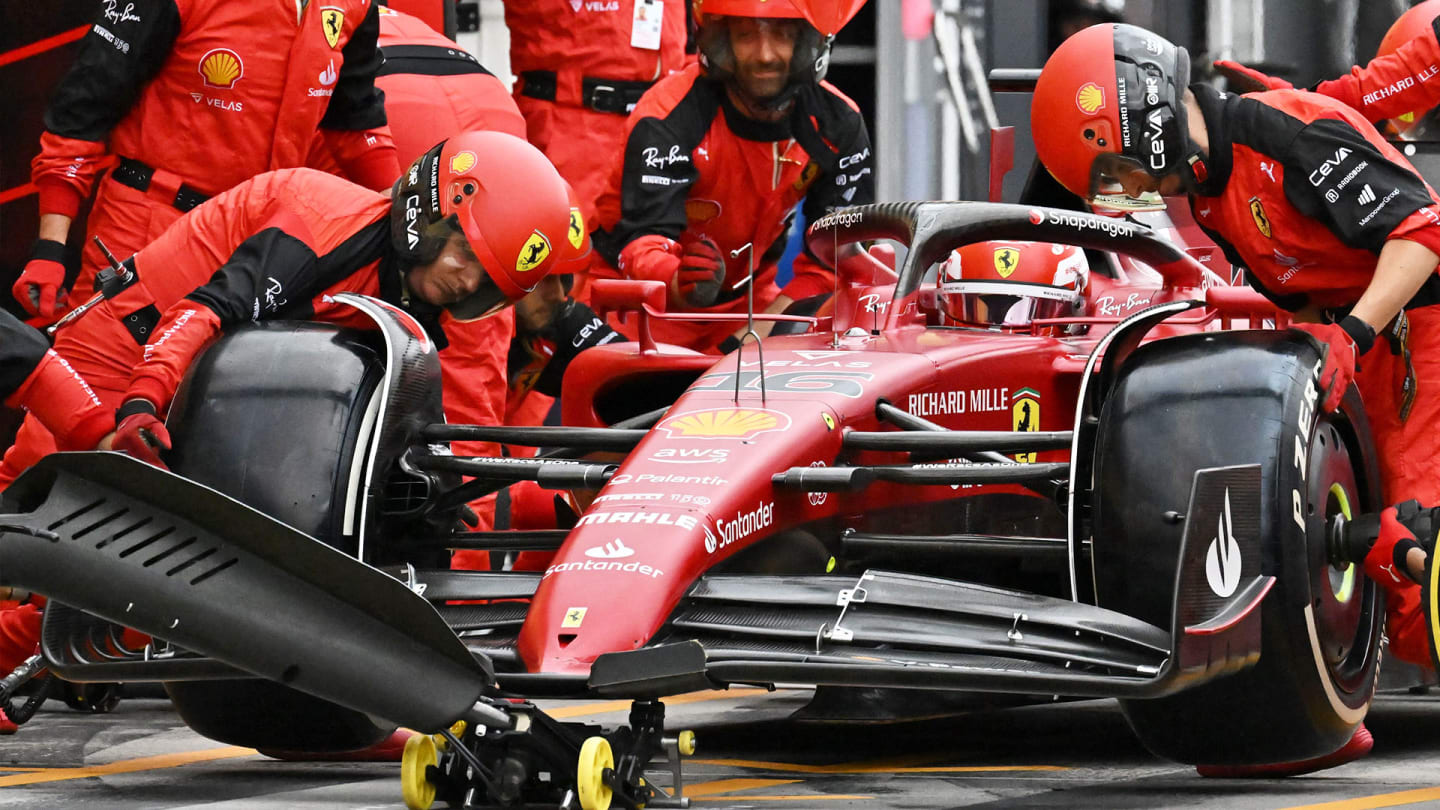
News
Binotto says Hungarian GP wasn’t winnable for Ferrari – and that tyre choice wasn’t decisive factor
Share

Charles Leclerc said that a decision to switch to hard tyres midway through the Hungarian Grand Prix cost him a chance of victory. But Ferrari Team Principal Mattia Binotto countered that viewpoint after the race, saying that while the decision to use the hards was the wrong one, Ferrari had endured bigger issues on Sunday in Budapest.
Carlos Sainz and Leclerc started P2 and P3 on the grid, with Leclerc showing strong pace on his medium tyres early on, as he jumped Sainz in the pit stops before passing pole-sitter George Russell for the race lead on Lap 31.
Thereafter, however, Leclerc would fall down the order after a second stop for hards, eventually coming home P6 following a third stop to ditch those tyres for a set of softs – while a soft-shod Sainz too was caught and passed by Lewis Hamilton for P3 in the final 10 laps to finish P4.
Picking through the race on Sunday evening, Binotto was asked about the decision to put Leclerc onto the hard tyre, the Swiss replying: “When we fitted the hard, our simulation was that it could have been a difficult couple of laps of warm-up, slower than the medium for 10-11 laps, and then it would have come back and been faster by the end of the stint – and it was a 30-lap stint.
“Based on our data and our analysis, we knew the hard was not as fast as the medium, but it could have been as fast 11 laps into the stint… Yes, it didn’t work and we would not have fitted them had we known they would be as bad.”
Leclerc 'very disappointed' with P6 and baffled by decision to switch to hards
Asked if the Ferrari pit wall had been keeping tabs on the progress of Alpine, meanwhile, the Anglo-French team’s drivers having also struggled on the hard after fitting them earlier in the race than Leclerc, Binotto said: “Yes, we discussed it and it’s not all written in the stars; we are looking at what’s going on and what’s happening with the other tyres. We took all considerations, we discussed what was best and that was the choice we made. It certainly was not the right one today.”
Although tyres were the main talking point surrounding Ferrari after the race, Binotto – who targeted a Ferrari one-two coming into the weekend, and whose team were fastest by a clear margin in Friday’s sessions – said the main puzzle for him was why the F1-75 hadn’t worked as well as the team had predicted on Sunday – Sainz having also suffered despite not running the hard at any point in the race.
“I think it’s important to say the pace of the car today was not as expected, [considering] the speed we had when we look back to Friday and the race simulations from Friday,” said Binotto. “It was totally different conditions, cooler but overall the speed today was not quick enough, whichever tyres we were using.

Leclerc felt this was the moment he lost the Hungarian Grand Prix – but Binotto didn't agree
“Something [was] wrong with the car, how we set it up for the conditions of today, that made as well a harder life for the tyres, and certainly as a consequence, the hard was working very badly.”
Asked if he felt that there was any way Ferrari could have won in Hungary, meanwhile, Binotto replied: “I don’t think so. As I said before, we were lacking pace and I don’t think we would have won today. Because it’s the first time in these races that we didn’t have the speed so much to be there for the victory.
READ MORE: Verstappen recovers from P10 to take Hungarian GP win as Mercedes secure double podium
“We need to look first into that, performance-wise, to understand. I’m pretty sure that once we understand that, we understand why the car was not working properly.”
Ferrari now sit 97 points adrift of Red Bull with nine races remaining in 2022 – Leclerc a full 80 points adrift of championship leader Max Verstappen.
YOU MIGHT ALSO LIKE
News Formula 1 welcomes PwC as Official Consulting Partner
News ‘I’m 2000% behind him’ – Vasseur backs Hamilton amid early Ferrari struggles as he insists ‘potential is there’
News Bayer admits Lawson left ‘sad and puzzled' by Red Bull seat swap as he predicts New Zealand driver 'will be back and he will be quick'
NewsF1 Unlocked F1 The Movie European Premiere - WIN with F1 Unlocked



